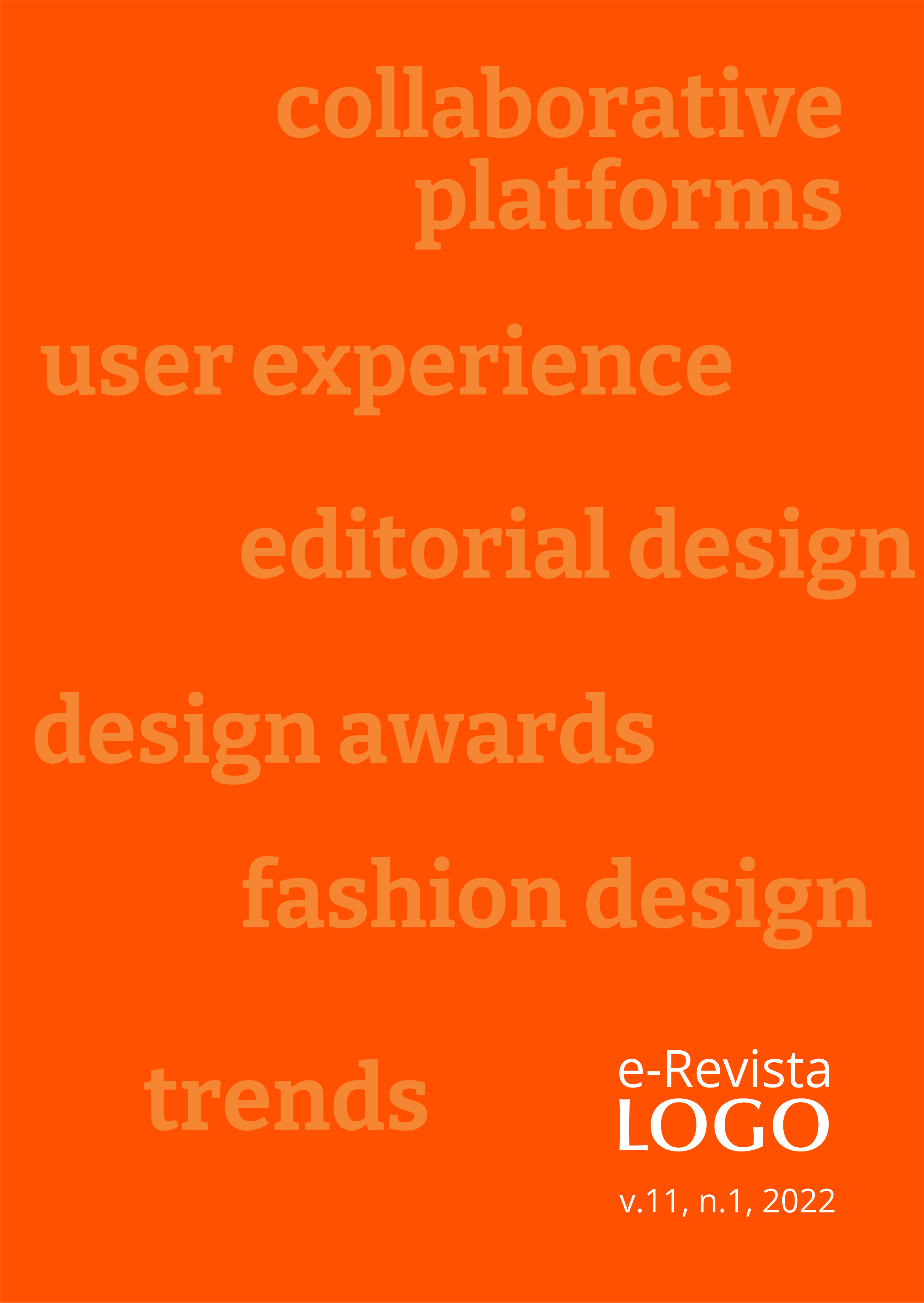The user experience in vernacular design and erudite design
Palavras-chave:
design vernacular, design erudito, experiência do usuárioResumo
This paper presents the results of a conclusion work on the specialization
course in UX Design from Univille. It aims to investigate how the user
experience occurs when using vernacular products and erudite products. The
methodology is a case study, with a qualitative-quantitative and descriptive
approach. This study analyzes and compares two different products, one
from vernacular design and the other from erudite design, using the user
experience evaluation method called 'AttrakDiff' (HASSENZAHL et al., 2008).
Referências
ARAUJO, Carolina. Métodos para a avaliação de experiência do usuário no design de produtos. Florianópolis. 2018.
ARAUJO, Fernanda. Avaliação da experiência do usuário: uma proposta de sistematização para o processo de desenvolvimento de produtos. Florianópolis. 2014.
ATTRAKDIFF. Your benefits. DisponÃvel em: <http://attrakdiff.de/index-en.html#nutzen>. Acesso em: 02 out. 2020.
BECCARI, Marcos et al. A philosophical approach about user experience methodology. Curitiba. 2011.
CARDOSO, Fernanda. Design gráfico vernacular: A arte dos letristas. Rio de Janeiro. 2003.
CARDOSO, Rafael. Uma introdução à história do design. São Paulo: Edgard Blücher. 2000.
DANTAS, Vanessa. Métodos de avaliação da experiência do usuário (UX) com eletrodomésticos: um estudo exploratório. Curitiba. 2014.
G1. Vassoura caipira continua fazendo sucesso. DisponÃvel em: <http://g1.globo.com/sao-paulo/sorocaba-jundiai/nosso-campo/noticia/2016/08/vassoura-caipira-continua-fazendo-sucesso.html>. Acesso em: 02 out. 2020.
HASSENZAHL, Marc et al. Der User Experience (UX) auf der Spur: Zum Einsatz von www.attrakdiff.de. Landau. 2008.
ISO 9241-210. Ergonomics of human–system interaction Part 210: Human-centred design for interactive systems. Genebra: ISO. 2010.
LOBACH, Bernd. Design industrial: bases para a configuração dos produtos industriais. São Paulo: Blücher. 2001.
NEVES, André. Design Thinking Canvas. Recife. 2014.
PADOVANI, Stephania et al. Usabilidade & user experience, usabilidade versus user experience, usabilidade em user experience? Uma discussão teórico-metodológica sobre comunalidades e diferenças. Natal. 2012.
ROSEMBAUM, Marcelo. Várzea queimada. DisponÃvel em: <http://rosenbaum.com.br/projetos/agtvarzeaqueimada/>. Acesso em: 25 ago. 2020.
ROZENFELD, Henrique. et al. Gestão de desenvolvimento de produtos: uma referência para a melhoria do processo. São Paulo: Saraiva, 2006.
STARK, John. Product lifecycle management Volume 1: 21st century paradigm for product realisation. 3. ed. Genebra: Springer. 2015.
UXPA. About UX. DisponÃvel em: <https://uxpa.org/about-ux/> Acesso em: 2 out. 2020.
VALESE, Adriana. Design vernacular urbano: a produção de artefatos populares em São Paulo como estratégia de comunicação e inserção social. São Paulo. 2007.
Downloads
Publicado
Edição
Seção
Licença
Copyright (c) 2022 e-Revista LOGO

Este trabalho está licenciado sob uma licença Creative Commons Attribution 4.0 International License.
This journal, following the recommendations of the Open Access movement, provides public access to all its content, following the principle that free access to research generates a greater global exchange of knowledge. Such access is associated with the reading and citing an author's work.
The author must ensure:
-
that there is a full consensus of all co-authors in approving the final version of the document and its submission for publication.
-
that their work is original, and if the work and / or words of other people were used, they were duly recognized.
Plagiarism in all its forms constitute unethical publication behavior and is unacceptable.
The articles and other published works, become the property of the journal.
The contents of e-Journal LOGO are licensed under a Creative Commons License 4.0 by. It reserves the right to use software or other methods of detecting plagiarism to analyze the submitted works.
Under the license you have the right to:
- Share - copy and redistribute the material in any media or format
- Adapt - remix, transform, and create from material to any purpose, even if commercial.
- The licensor can not revoke these rights as long as you respect the license terms.
According to the following terms:
- Assignment - You must give the appropriate credit, provide a link to the license and indicate if changes have been made. You must do so in any reasonable circumstance, but in no way do you suggest to the licensor to support you or your use.
- No additional restrictions - You may not apply legal terms or technological measures that legally restrict others from doing anything that the license permits.
The authors of papers submitted to the e-Journal LOGO authorize their publication in physical and electronic media for academic purposes. The authors also agree on the distribution of articles by national and international indexing databases, whether or not for profit, and can be reproduced as long as the source is cited.
O autor deve garantir:
- que haja um consenso completo de todos os coautores em aprovar a versão final do documento e sua submissão para publicação.
- que seu trabalho é original, e se o trabalho e/ou palavras de outras pessoas foram utilizados, estas foram devidamente reconhecidos.
Plágio em todas as suas formas constituem um comportamento antiético de publicação e é inaceitável.
Os artigos e demais trabalhos publicados, passam a ser propriedade da revista.
Os conteúdos de e-Revista LOGO estão licenciados sob uma Licença Creative Commons 4.0 by. Reserva-se o direito de usar software ou otros métodos de detecção de plágio para analisar os trabalhos submetidos.
Segundo a licença você tem direito de:
- Compartilhar — copiar e redistribuir o material em qualquer suporte ou formato
- Adaptar — remixar, transformar, e criar a partir do material para qualquer fim, mesmo que comercial.
- O licenciante não pode revogar estes direitos desde que você respeite os termos da licença.
De acordo com os termos seguintes:
- Atribuição — Você deve dar o crédito apropriado, prover um link para a licença e indicar se mudanças foram feitas. Você deve fazê-lo em qualquer circunstância razoável, mas de maneira alguma que sugira ao licenciante a apoiar você ou o seu uso.
- Sem restrições adicionais — Você não pode aplicar termos jurídicos ou medidas de caráter tecnológico que restrinjam legalmente outros de fazerem algo que a licença permita.


